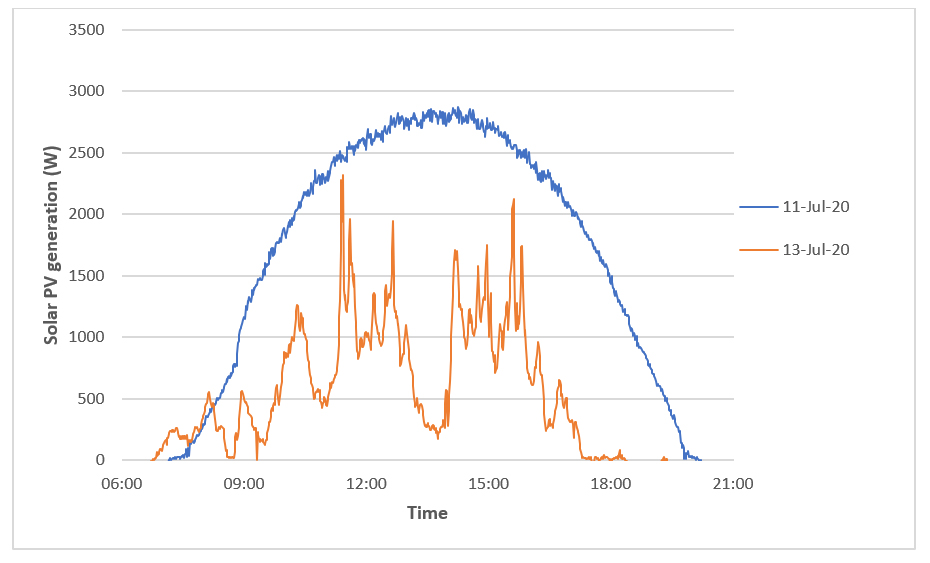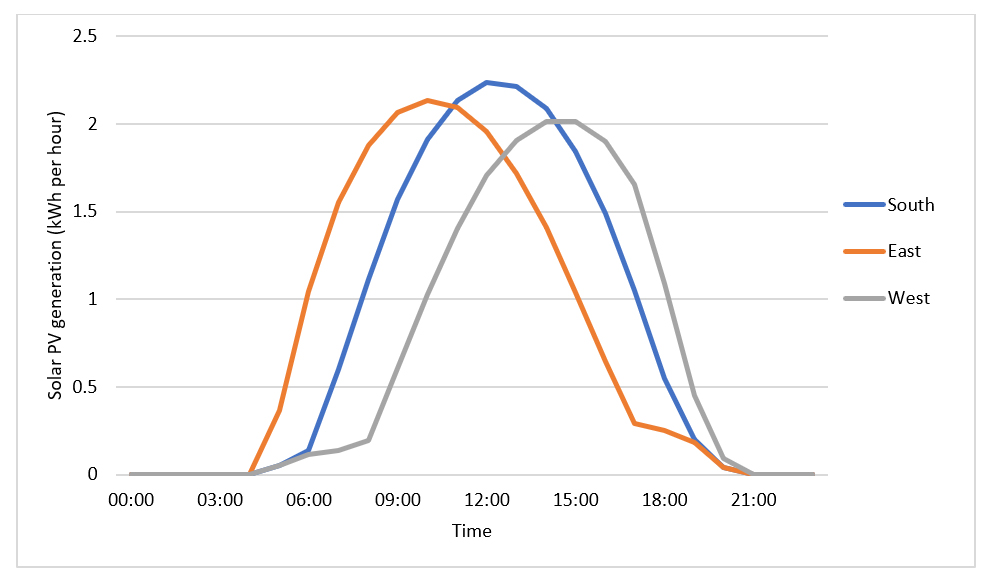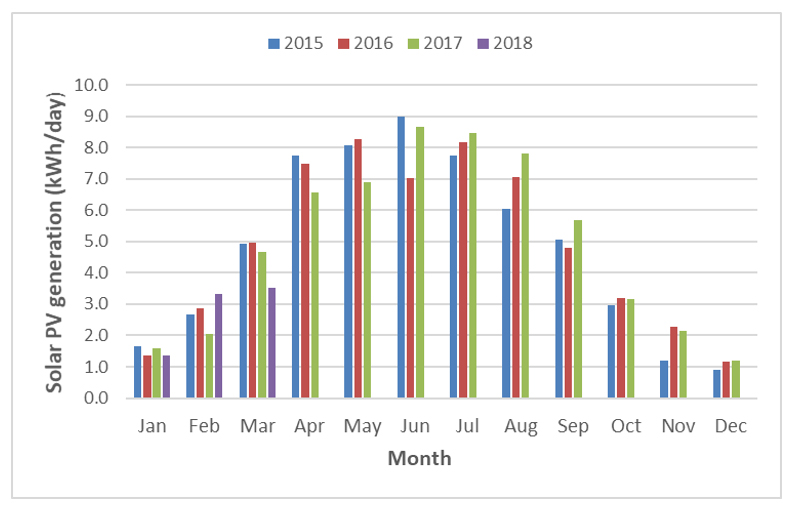How much electricity do solar panels produce?
Solar panels generate electricity during the day. They generate more electricity when the sun shines directly on the solar panels. Figure 1 shows PV generation in watts for a solar PV system on 11 July 2020, when it was sunny throughout the day and on 13 July when there was a mixture of sun and cloud.

A south facing solar PV system will tend to generate more around noon. The sun rises in the east and so east-facing PV panels will have maximum generation part-way through the morning. A west-facing array will tend to generate most electricity part-way through the afternoon as shown to the right.

In the UK, the annual electricity generation from a PV array is highest if it faces due south with an inclination of 35 degrees. Figure 3 to the right from the MCS Guide to the Installation of Photovoltaic systems shows the percentage of the maximum yield that a solar array would produce for different angles of orientation and inclination.

Solar PV generation is higher in the summer than the winter due to longer days and the sun being higher in the sky. Figure 4 shows the typical monthly values of solar PV generation for a 2.35kW solar PV system in London which faced 60 degrees from south. From year to year there is variation in the generation for any particular month. There is less variation in the annual generation from year to year as weather patterns over the year average out.

The annual generation of a solar PV system also varies with location in the country. This is due to variations in the level of solar radiation which reaches the ground. Figure 5 shows a map, with parts of the country which have higher levels of solar radiation coloured in red and orange and those with lower levels in blue. A solar PV system on the south coast of England for example will generate more electricity annual than one of a similar size, orientation and inclination in the north of Scotland.
A solar PV system on the south coast of England for example will generate more electricity annually.

Shading
The performance of a solar PV system is affected by shading of the solar panels. This could be from trees or bushes, dirt or leaves on the solar panels, or shadows from chimneys or other buildings. If you have shading of your solar panels from trees or bushes, you should contact your landlord to discuss this rather than attempting to cut them back yourself.
If you are considering installing solar PV on a roof that is likely to suffer from shading, it is worth considering using either optimizers or microinverters. In this case, the generation would be less affected by shading than if a string inverter was used with the system.

